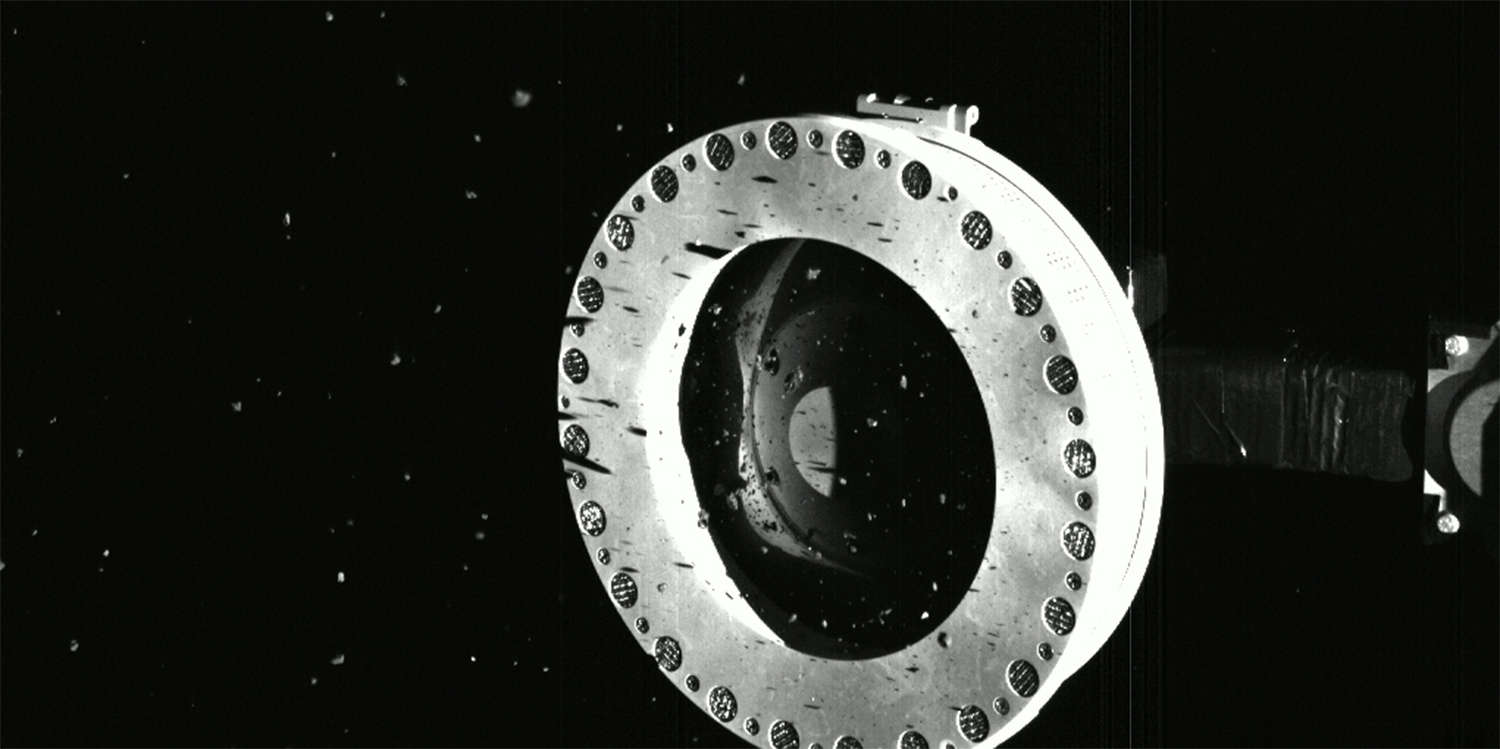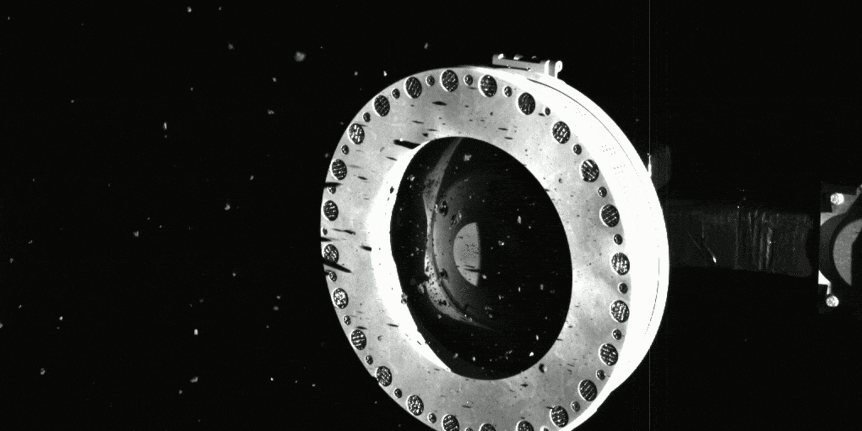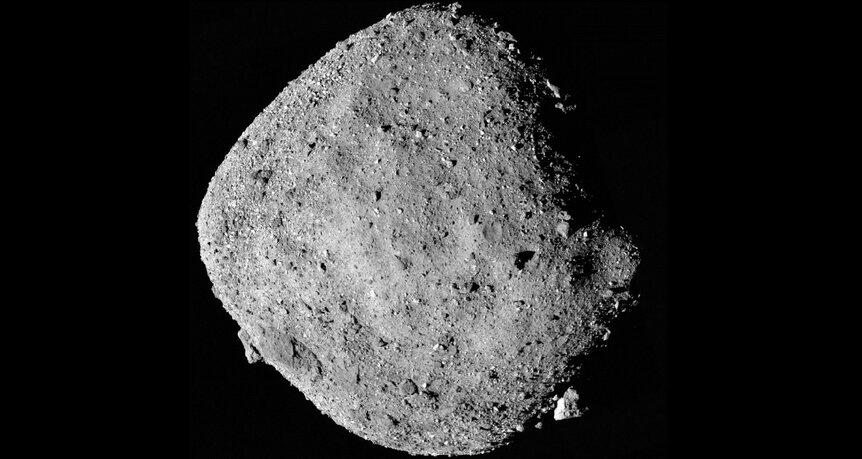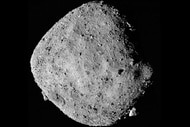Create a free profile to get unlimited access to exclusive videos, sweepstakes, and more!
UPDATE: The Bennu asteroid sample collection was successful! Almost *too* successful

The NASA OSIRIS-REx spacecraft attempted to collect samples of the asteroid Bennu on Tuesday, and during a press conference on Friday (23 October), team scientists announced they were not only successful, they were wildly successful: They expected to get 60 grams of material, but instead got several hundred.
Whoa.
Note: You can watch a replay of the entire press conference here:
As I wrote earlier, on 20 October, the spacecraft slowly approached the surface of the asteroid. The Touch-and-Go Sample Acquisition Mechanism (or TAGSAM) was extended on the end of a long arm. The head of TAGSAM is a cylinder about 30 centimeters across (like a large dinner plate), a sophisticated device that emits a blast of nitrogen gas to blow out material on Bennu's surface, guiding it into storage units on the inside of the head.
It was clear at the time that everything worked, but it was unclear about the details. How deep did the head go? How much material was collected?
It turns out the head went much farther into the asteroid than first thought. It made contact and one second later the nitrogen gas released for five seconds. During that time the motion of the spacecraft drove the collector what looks like 48 centimeters into the asteroid — nearly half a meter, or a foot and a half!
The surface is covered in very loose material that is extremely crumbly, explaining how they penetrated so far. Six seconds after contact, the reverse thrusters on OSIRIS-REx fired, backing the spacecraft away. In fact, when the thrusters fired the spacecraft was still driving into the asteroid at 4 cm/second. This material is basically more fragile than spun sugar.
Images taken by a camera on the spacecraft showed the results. A big cloud of debris was generated, and they think the collector literally filled with it — given the amount and density of the material, they may have collected up to 2,000 grams of dust, grains, and pebbles from Bennu! More likely it's less, perhaps a few hundred grams, but either way it's far more than they had hoped.
In fact, that's something of a problem. As the images show, some of the pieces were actually bigger than a centimeter across, and one of them got jammed into a flap meant to close the container. Scientists think that some of the material may be coming out of the sample container! It may not be much, but it's not clear. Hopefully most of it is securely in there.
But better safe than sorry. They were going to perform a maneuver to spin the spacecraft in order to weigh the amount of material they got, but they've decided to cancel that to make sure they don't dislodge more of the sample. Other maneuvers have been canceled as well, just to be safe. In fact, the spacecraft is still receding from Bennu at 40 cm/second, the velocity it got when it backed away from the sample collection, which means it's already over a hundred kilometers away from the asteroid. That's OK, though, since there's plenty of fuel to return to it.
Now they're looking at how to stow the sample. It wasn't designed to be stowed with material actively coming out of it, so they're going to be very careful there. This will be done with substantial human intervention, with images returned to Earth along every step of the way to make sure everything goes smoothly. There's a roughly 20-minute light-travel-time delay due to Bennu being 330 million km away, so this procedure will likely take a while, and require a great deal of patience. They do expect to lose some material during this procedure, but hopefully not much.
Once stowed, the spacecraft will remain near Bennu to perform more science observations. In March of 2021 it will finally leave and start the long journey back to Earth. In 2023 the sample return capsule will be ejected and parachute to the ground, where very eager scientists will be waiting.
I'm excited too! This will be by far the largest sample from an asteroid collected in situ ever collected. Hopefully it will have a diverse array of rocks in it, so that we can learn as much as possible about this near-Earth asteroid.
Congratulations to the entire OSIRIS-REx team!
Follow the spacecraft mission on Twitter via the OSIRIS-REx account.
















